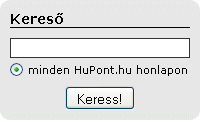Cloud Solution for Microsoft 365, SharePoint & OneDrive
Boost productivity & control with our guide to SharePoint document management best practices. Learn how to optimize your system with metadata, governance, security, and automation for seamless collaboration and compliance.

A honlap ára 78 500 helyett MOST 0 Ft.
Honlapkészítés ingyen:
Ez a weblapszerkesztő alkalmas
ingyen weboldal,
ingyen honlap készítés...
Honlapkészítés ingyen:
Ez a weblapszerkesztő alkalmas
ingyen weboldal,
ingyen honlap készítés...
Oldal: A-Comprehensive-Guide-to-SharePoint-Document-Management-Best-Practices
Cloud Solution for Microsoft 365, SharePoint & OneDrive - © 2008 - 2025 - cloud.hupont.hu
Cloud Solution for Microsoft 365, SharePoint & OneDrive - © 2008 - 2025 - cloud.hupont.hu
